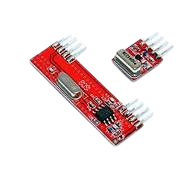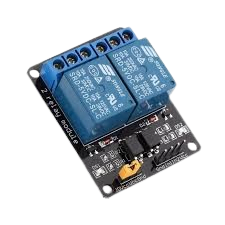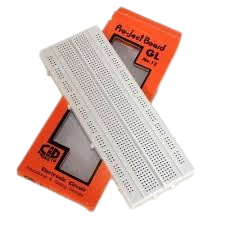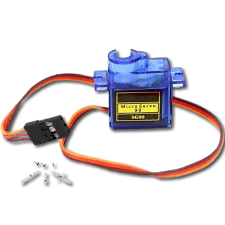No products in the cart.
Heat Sinks
Cooling Block
Availability:
1 in stock
A cooling block, essential in electronics and machinery, dissipates heat efficiently with materials like aluminum or copper. It enhances performance and longevity by maintaining safe operating temperatures for CPUs, LEDs, and industrial equipment. Available in various types, it supports passive or active cooling methods to suit diverse applications.
₹419.14 ₹649.00 (Incl. GST)
1 in stock
🔥 Limited Stock! Order now before it's gone! Summer Sale is Live Now !!
Cooling Block
A cooling block, also known as a heat sink, is a crucial component used in electronics and mechanical systems to dissipate heat generated by electronic components or machinery. Here’s an overview covering its features, types, applications, and advantages:
Features
- Heat Dissipation
- Designed to absorb and dissipate heat away from electronic components or mechanical devices.
- Typically made from materials with high thermal conductivity, such as aluminum or copper.
- Structure
- Consists of a block-shaped structure with fins or channels that increase surface area for efficient heat transfer.
- Enhances cooling efficiency by promoting airflow or facilitating liquid cooling.
- Mounting Options
- Available with various mounting options, including adhesive pads, clips, screws, or thermal paste for secure attachment to components or surfaces.
- Sizes and Configurations
- Comes in different sizes and configurations to match the thermal requirements of specific applications.
- Customizable designs for optimal cooling performance in diverse environments.
Types
- Passive Heat Sinks
- Uses natural convection or radiation to dissipate heat without additional power or active cooling mechanisms.
- Ideal for applications with moderate heat dissipation requirements.
- Active Heat Sinks
- Incorporates fans or pumps to enhance airflow or coolant circulation, improving heat dissipation efficiency.
- Suitable for high-performance electronics, processors, and industrial machinery.
- Liquid Cooling Blocks
- Utilizes liquid coolant, such as water or specialized fluids, circulated through channels within the block.
- Provides superior heat dissipation capabilities for overclocked CPUs, GPUs, and power electronics.
Applications
- Electronics and Computers
- Used in CPUs, GPUs, power transistors, and voltage regulators to maintain optimal operating temperatures and extend component lifespan.
- Essential for gaming PCs, servers, and data centers to prevent thermal throttling and ensure system stability.
- LED Lighting
- Installed in high-power LED fixtures to manage heat generated by LEDs, improving reliability and longevity.
- Supports efficient operation and consistent light output in commercial and industrial lighting applications.
- Automotive and Aerospace
- Employed in vehicle electronics, motor controllers, and avionics systems to manage heat in harsh operating conditions.
- Enhances reliability and performance of automotive electronics and aerospace equipment.
- Industrial Machinery
- Used in motor drives, power supplies, and industrial automation equipment to cool critical components during operation.
- Ensures continuous operation and minimizes downtime due to overheating.
Advantages
- Enhanced Performance
- Maintains components within safe temperature limits, preventing thermal degradation and performance degradation.
- Improves system reliability and efficiency in demanding applications.
- Cost-Effective Solution
- Provides a cost-effective method to manage heat compared to complex cooling systems or frequent component replacement.
- Extends the lifespan of electronic components and reduces maintenance costs.
- Versatility and Customization
- Available in a wide range of sizes, shapes, and materials to suit specific cooling requirements and space constraints.
- Supports customization for specialized applications and unique thermal management needs.
Conclusion
Cooling blocks play a vital role in thermal management for electronics, machinery, and industrial systems, ensuring reliable performance and longevity. Their efficient heat dissipation capabilities and versatility make them essential for maintaining optimal operating temperatures and protecting valuable equipment from heat-related damage.
Sold By: Computronics Lab
SKU: cooling-block
Category: Heat Sinks
Tags: DIY electronics, Electronic Components, electronics projects, Greater Noida, Robotics
Based on 0 reviews
0.0 overall
0
0
0
0
0
Be the first to review “Cooling Block” Cancel reply
Related products
- Sensors and Modules
RF Module (Red) 433Mhz
Rated 5.00 out of 5(1)The RF Module (Red) 433MHz is a wireless communication module used for transmitting and receiving data over short distances. Operating at 433 MHz, it is ideal for remote controls, wireless sensors, and simple data transfer applications. Its compact design ensures easy integration into various electronics projects.SKU: rf-module-red-433mhz - Sensors and Modules
Relay Module 2 Channel 12V
0 out of 5(0)The Relay Module 2 Channel controls two high-voltage devices with low-voltage signals. Each relay handles up to 10A at 250V AC or 30V DC. Featuring optocoupler isolation for safety and LED indicators for status monitoring, it is ideal for home automation and DIY projects.
SKU: relay-module-2-channel - Arduino Accessories
Breadboard GL12 840 Points
0 out of 5(0)The Breadboard GL12 840 Points is a versatile and spacious prototyping tool, ideal for building and testing electronic circuits. With 840 connection points, it offers ample space for complex projects, facilitating easy component placement and wiring. Its self-adhesive backing allows for secure attachment, making it a valuable asset for both hobbyists and professionals.
SKU: breadboard-gl12-840-points - Servo Motors
Servo Motor SG90
0 out of 5(0)The Servo Motor SG90 is a compact and lightweight servo, perfect for precise control in robotics and model projects. With a 180-degree rotation range, it’s ideal for steering, arm movements, and other motion control tasks. Its reliability and ease of use make it a popular choice for hobbyists and professionals alike.
SKU: servo-motor-sg90






There are no reviews yet.